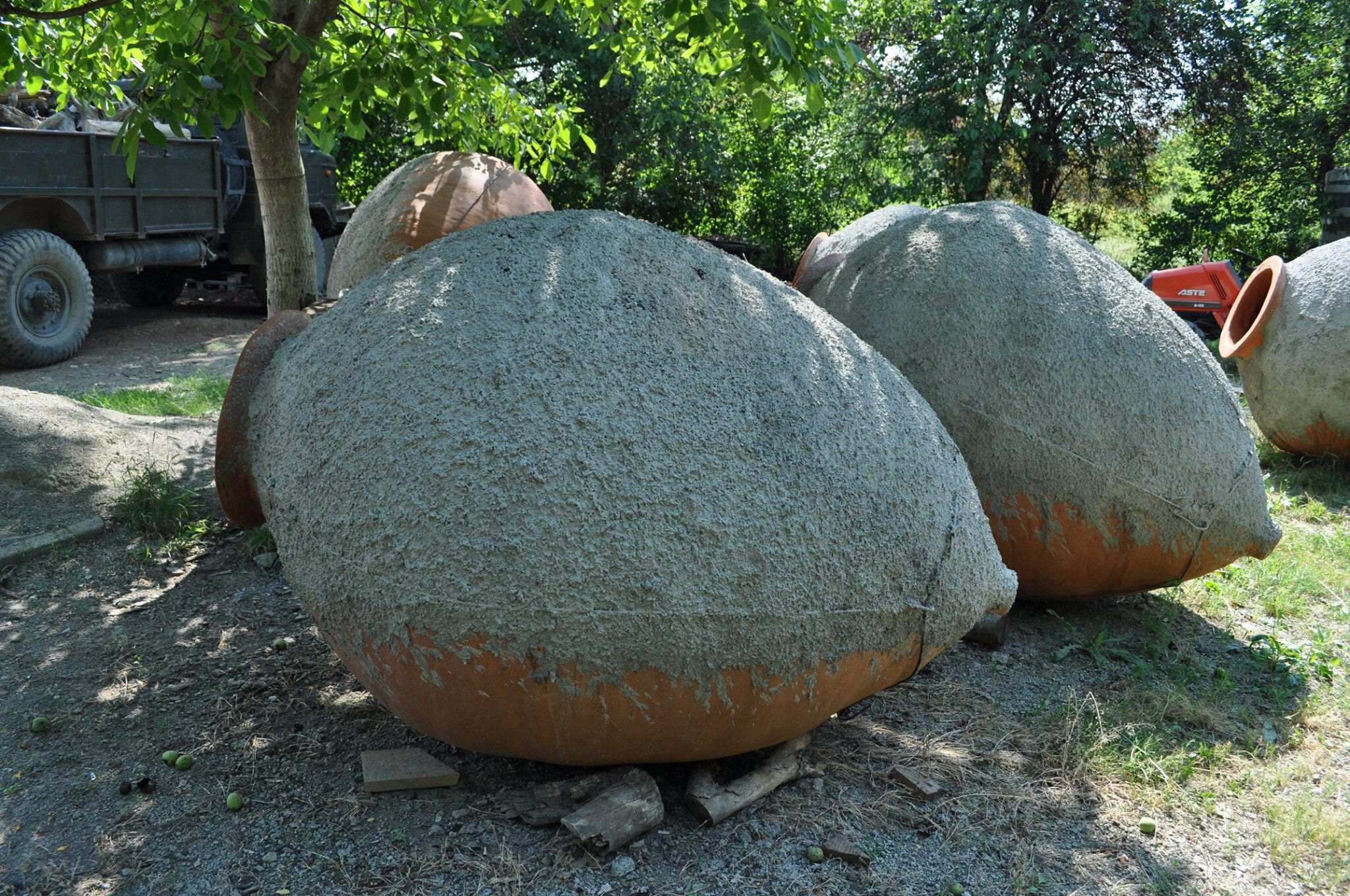We all know about white, red, and rose wines but there is another style. Orange wine has been hitting the shelves and pages of restaurant wine lists in recent years. No, it isn’t made from actual oranges but is so named due to the orange/amber hue of the wine. A British wine importer popularized the term “orange wine” in 2004. While the standard industry name is “orange wine”, I prefer the term amber. My first experience with this style was in Georgia (the country) and they call their wines amber. Georgia is home to the oldest evidence of wine making -going back 8,000 years - and they have significantly influenced the resurgence of this wine style across the globe. So, I think they should have some say in how we refer to this type of wine. I also think “amber” better describes this wine style and people won’t assume it is made of actual oranges! While Georgia has excellent examples, several other countries have an amber wine tradition and even more winemakers are experimenting with this style, including in the United States.
What exactly gives this wine its distinctive color? Amber wines are made by fermenting the juice of white grapes with the skins, similar to red wines and rosés. Rosés are made with the juice of red grapes or a mix of white and red. The juice is briefly fermented with the skins, anywhere from a few hours to a few days. The longer the contact with the skins, the deeper the color of the wine. This is similar to an amber wine. You can have an Italian Pino Grigio Ramato (meaning copper) where skin contact is for a few days to a Georgian Mtsvane where the juice ferments with the skins for six months or more. This is way many white wines were produced before modern production methods.
Two Georgian Amber wines
The skin contact gives amber wines tannins, which are that the texture and structure you usually notice in red wines. The level of tannins will depend on the time of skin contact and if the wine is later aged in oak barrels. Some producers ferment the wine with the skins, stems, and leaves which can add a slightly bitter taste to the wine. In Georgia, wines are traditionally produced in large egg shaped clay vessels known as qvevri buried into the ground. Several wine producers have adopted the Georgian qvevri to make their own amber style wines. There is even a winemaker (Purgatory Cellars) outside of Denver who makes small batch amber wines in Georgian qvevris. In Greece and other areas of Europe you might see similar clay vessels, usually referred to as amphora, used for amber wine production.
Drinking wine straight out of a qvevri.
Amber wine is often lumped together with natural/organic wines; however, just because a wine is amber does not mean it is natural/organic. Many wines made in the traditional methods (clay qvevri or amphora) use natural yeast and minimal processing but several do not. There is no global standard for organic wines as each country has its own rules, which usually allow the use of some sulfites to preserve the wine. Check the label and research the winery to ensure any wine is actually organic/natural.
The flavors and aromas of amber wine will vary based on the grape used and amount of skin contact. Some wines can have flavors/aromas of honey, wood, sourdough, jackfruit, and juniper. When pairing food, try for something from the region the wine is grown. Mediterranean flavors often pair well as do some curries and other Asian food.
Note that some wineries make very small batches of amber wine and are therefore hard to find at your regular wine shop. However, Georgian, Greek, Italian, and Slovenian are easier to find or order online. Some amber wines to try:
Pino Grigio Ramato from Friuli-Venezia Giulia in Italy
Moschofilero from Greece
Mtsvane from Georgia
Kisi from Georgia
Newly produced qvevri on their sides.






